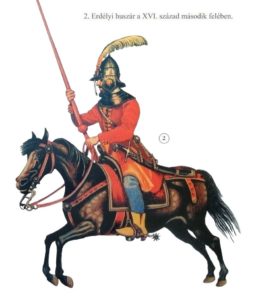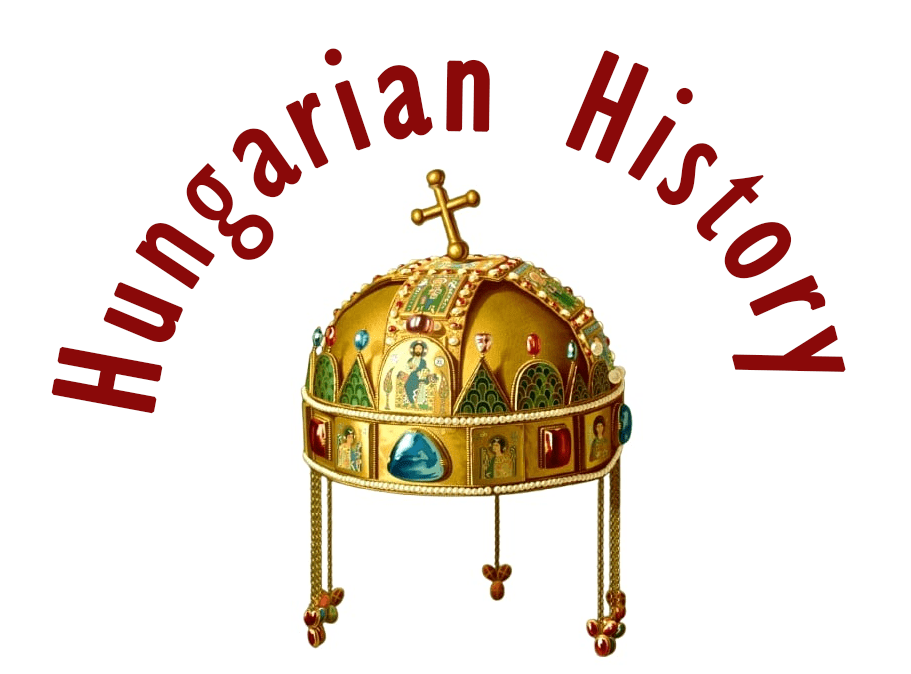The Long War, Part 16 / 1596, The Battle of Mezőkeresztes

After the Battle of Mohács (1526), this was perhaps the second biggest large-scale battle between the main Ottoman armies and the allied Christian forces. There were about 40,000-50,000 men in the Christian army and 80,000-100,000 in the Muslim army. The Christian army had 10,000 Austrians, 4,000 Germans, 3,000 armored cavalry, 13,000 Hungarian Hussars, and 10,000 Transylvanians, plus 15 other European countries. The site of the battle is called Mezőkeresztes, which means Plain of the Cross, Haçova in Turkish.

After taking Eger, the Ottomans marched out to face the Christian army on a battlefield that was not the most advantageous for them. Read the previous parts for more information about Eger’s fall:
22 October 1596 – The first clashes of the Battle of Mezőkeresztes, Hungary
Let us read the summary of this fierce battle written by the historian Szibler Gábor:
The Christian armies joined forces on 18-20 October and arrived at the well-chosen field of Mezőkeresztes on 22 October. It was the suggestion of Prépostváry Bálint, the former captain of Eger Castle, that the recapture of Eger should be attempted after the Sultan’s army had gone home, but if they were forced to fight, they should choose a narrow and swampy area that would be better for the Christian artillery and their infantrymen. That is why Miksa (Maximilian) had chosen Mezőkeresztes.

When the Sultan’s commanders were informed of the enemy’s advance, they sent out a vanguard of 15-20,000 men led by Pasha Dzsafár (Jafar). They were to find out the number of the Christian army by launching smaller attacks.
At Mezőkeresztes there was a brook that crossed the field, it was surrounded by swampland, and on its northern part, there was a destroyed village. The troops could only cross the stream through a narrow ford, which was captured by the Ottomans who arrived earlier.

The Christian vanguard arrived there in good military order, led by Chief Field Marshal Hermann Christoph Russwurm and Chief Camp Master Johann Baptist Pezzen. They had 5-600 horsemen and reached Mezőkeresztes towards the evening of 22 October. They met the Turkish troops crossing the river.
Dzsáfer’s original plan may have been to send his army against the Christians in two lines. He thought that the first line would trap the enemy in front of the second line, which would fire on them with muskets and cannons, crushing them unit by unit.
But Russwurm and Pezzen bravely held off the Ottoman attack and sent for reinforcements. The horsemen of the Austrian Schwarzenberg and the Hungarian Pálffy came to their aid, followed by the Transylvanian horsemen. They pushed back the first Turkish line to the other side of the brook. Then they asked for cannons to force their way through the ford of the stream.

The elite blue-uniformed Transylvanian infantrymen (Hajdú soldiers) managed to cross the stream a little to the north and caught the Ottomans on the side. The cavalry followed and attacked the second Turkish line. However bravely Dzsáfer fought, he was forced to flee. The Turkish cannons were captured and the Transylvanian and Walloon cavalry pursued the runners to the town of Mezőkövesd. The Turks suffered few casualties and the Christians lost only 15-16 men. However, the success filled the hearts of the Christians with joy and self-confidence and Prince Báthory wanted to chase the enemy at dawn, but Archduke Miksa (Maximilian) and Schwarzenberg suggested that they rest instead. So they retreated from the ford and set up a fortified camp on the slopes of the hill.
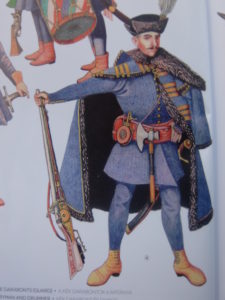
The initial defeat caused panic in the Ottoman camp. One of their proposals was to attack the Christians with a larger army, while others suggested the complete withdrawal of the Ottoman army, leaving the Anatolian forces at Eger Castle. They could not have stayed there anyway, because the Christians could have easily blocked the narrow valley from the south, trapping the Sultan’s army. The location was not good for the larger Ottoman army as they could not make full use of their cavalry.

Sultan Mehmed III was not very brave at this point. At first, he agreed to the first plan, but his tutor persuaded him to accept the battle with his entire army. Even fleeing home alone was an option for the Sultan, leaving the army behind. However, this must have demoralized the troops. Grand Vizier Dammad Ibrahim has also dissuaded him from this plan.
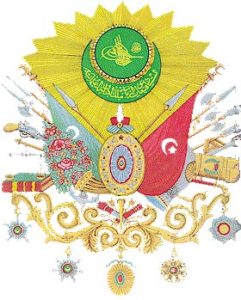
However, the Anatolian troops had to be moved because the Ottoman army would not have had its right wing. So they left only 5,000 men behind to guard their backs. The Sultan’s army left at dawn on 24 October and most of them arrived in Mezőkeresztes on 25 October.
You might like the article of Béres Sándor about the role of cavalrymen in the 16th-century battles, especially the Hussars:
https://www.hungarianottomanwars.com/essays/horses-of-battle/
24-25 October 1596 – The first bigger battles at Mezőkeresztes

All the different sources agree on the date of the main battle, which took place on 26 October. However, they either do not mention the clashes on 22 October or between 24 and 25 October, but rather speak of a battle that lasted two or three days. The first arriving Ottoman units started to camp on the south bank of the small river. 300 Transylvanian horsemen fought with the newcomers. The Ottoman vanguard consisted of the Crimean Tatar troops of Pasha Dzsigalazáde Szinán and Beglerbey Murád of Diyarbekir. They wanted to cross the river. Miksa (Maximilian) and Báthory decided to let 10,000 of them cross and then slaughter them. Many thousands crossed the river and hid behind a small hill while the rest fought with the Transylvanians.

The Christians arrived with some cannons and either killed the Tartars or forced them to flee to the other side of the river, taking away their cannons. Darkness fell and the battle ended for the day. The Christians reinforced their camp and posted guards at the fords. The main units of the Sultan’s army arrived one by one on Friday 25 October. The Rumelians arrived first, then the mercenaries from the Sublime Port with the Sultan, and the Anatolians were the last to arrive. At dawn, the Ottoman troops launched a new attack on the ford and drove off the guards. The Christians sent for reinforcements, cannons arrived and the Tartars were pushed back again.

Seeing the arrival of the main Ottoman army, Archduke Miksa (Maximilian) deployed his army on the field. One of his units guarded the camp, while Teuffenbach defended the ford of the brook. Miksa led the center and Báthory the left wing. The Turks had also deployed their army. The Crimean Tatars were in the first line, the Diyárbekirs, the warriors from Damascus led by Dzsigalazáde. The cannons were placed in front of the second rank, with the Janissaries behind them. Then the Sultan and his bodyguard cavalry stood right behind them. The Rumelians were on the left and the Anatolians on the right.

The battle began around midday with artillery fire. The Christians were more successful. The Rumelian army, supported by the vanguard, fought at the ford of the stream, trying to establish a bridgehead on the other side. Initially, the Janissaries and their cannons were pushing back the Teuffenbach, when the blue-uniformed infantrymen, led by Király Albert, arrived. (Note that I use the Eastern order of Hungarian names, where the surname comes first). They counter-attacked and killed about 3,000 Ottomans and took their cannons. The riflemen followed them to the other side of the river, but the hidden units of Dzsigalazáde ambushed them and forced them to flee. The Hungarians lost 150-200 Hajdú riflemen from the Upper Country army.

Again, the battle was over because of the evening. The Turks retreated to their camp and the Christians returned to the north bank of the stream. The battle of 25 October also brought success for the Christians, but it was clear that they would have to face the entire Ottoman army the following day.
26 October 1596 The Battle of Mezőkeresztes
After the battle of 25 October, the Christian commanders held a military council in the evening. They decided to let the Turks cross the ford of the brook and to crush them gradually. At the same time, they posted guards at the other, more defensible ford.
Archduke Miksa wanted to keep his army together and basically deployed his troops in a defensive pattern. He strictly forbade them to pursue the enemy beyond the swamp and to plunder the fallen, under penalty of death. He thought that if they could successfully defend themselves, the Turks would have to retreat after a while. As a result, the road to Eger would be cleared.

We do not know what the Ottoman military council decided that evening. Both armies were deployed at dawn the next day. The Christians left only a few thousand men to guard their camp, led by Carl Tettauer and Pogrányi Benedek.
The Christian army stood in three lines. In the center was Prince Báthory with his Transylvanian hussars, on the right were the Hungarian riflemen, and on the left were the Székely guardsmen and Transylvanian infantrymen. You can read more about the Székelys of Transylvania here:
https://www.hungarianottomanwars.com/essays/who-were-the-szekelys/
Miksa and his 4,000 heavy cavalry stood at the front of the second line, in the center with the riders of Pálffy and Teuffenbach. The other cavalry and infantry were placed on the wings of the second line. The Hungarian troops of the Royal Hungarian nobility were in the third line with Walloon, Austrian, and Moravian infantry and cavalry. There must have been cannons in the first line.

The Ottoman army stood in the usual crescent-moon formation. The cavalry of the Sublime Port was in the center with the Janissaries, the Crimean Tatars were on the left wing, behind them the Rumelians, while the troops from Asia were on the right wing. Most probably, the vanguard was again led by Pasha Murád and Dzsigalazáde Szinán.

As the ford was not guarded, the Ottomans crossed it. The first and second lines completed the maneuver and the unit of Beglerbey Hassan of Rumelia attacked the second ford to divide the Christian forces. He wanted to attack their camp from the rear, but they were unable to cross the damaged and heavily defended ford.
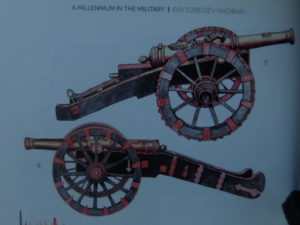
The main body of the Ottoman army slowly crossed the ford with great difficulty, dragging their cannons. About 10,000 men managed to cross by midday, but the maneuver was not yet complete. The Janissaries tried to create a bridgehead.
The Christians launched their counter-attack between midday and 1 p.m. and soon gained the upper hand. At the same time, the Janissaries were also attacked in front of the crossing troops.

The Christian cannons worked well, but Schwarzenberg’s first line also fought bravely. The Tartars tried to surround the Christians, but Teuffenbach defeated them and chased them across the swamp. The fleeing Tartars met the Anatolians who were trying to cross the small river, and they all got mixed up. Meanwhile, the Christian army, cavalry, and infantry together, advanced dynamically, wreaking havoc on the enemy with their powerful musket fire.

The Janissaries were defeated in a bloody melee and driven beyond the ford. Here the soldiers met with greater resistance and the Christian attacks were repulsed several times. Finally, the Christian artillery and the cavalry charge brought success to the coalition forces. The entire Ottoman army was driven back by 15:00, with the Turks losing between 1,000 and 3,000 men. The Christian casualties were much lower. So the Archduke’s plan worked, but after that, they failed in their strategy.
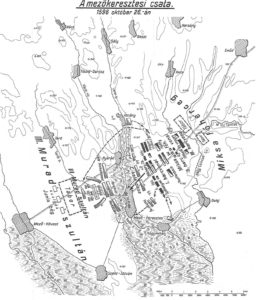
Miksa and Schwarzenberg wanted to retreat to the camp, but Pálffy, Király Albert, and Báthory, together with the Hungarian commanders, demanded that the enemy be pursued and destroyed. The Archduke was finally forced to agree.
The second phase of the battle began.
Miksa agreed to go in pursuit of the enemy only because he heard that the Sultan was supposedly fleeing towards Szolnok. It turned out to be a false report. Mehmed was not the bravest man, but he did not leave the battlefield. The order to pursue the enemy changed the battle plans and led to a tragic end.

Miksa urged Schwarzenberg to get the troops through the swamp intact. By this time, some units were already fighting on the other side, so the crossing could not be done in full military order. As they had to fight in the meantime, the marching order broke down and the different troops got mixed up and it was impossible to organize them into the right units on the other side of the brook.

However, the Christians’ attack was so strong that they were able to push the central body of the Turks, led by Grand Vizier Ibrahim, back into their camp. At the same time, they scattered the Anatolian army and the vanguard led by Dzsigalazáde Szinán on the right wing. The attackers pushed the center to the edge of the camp, where the first rank of the Turks ran away. The Christians ran into a solid line of Janissaries and their cannons, who fired at them in unison. Despite the losses they suffered, the Christians were not stopped, they captured the Ottoman cannons, took them away, and then entered the camp. They ran as far as the baggage wagons and even captured the Sultan’s tent.

The looting began. Sure of their victory, the foreign mercenaries, Transylvanians, and Hungarians began to throw down their weapons and to loot the tents and the baggage. They released the Hungarian warriors who had been captured during the siege of Eger, such as Captain Nyáry Pál. The Christians seemed to have won the day between 15:00 and 16:00 when they were able to enter the Turkish camp and scatter the enemy, but they were not able to destroy them. The looting caused total disorder and they did not know that the Sultan was still in his place and that the Ottomans still outnumbered them.

The Sultan gave two orders: firstly, that everyone should join the fight, and secondly, that he promised the camp servants that he would make them Sipahi lords if they attacked the enemy in the camp. Mehmed also recalled Pasha Hassan of the Rumelian army from his futile battle at the ford, and slowly everything was prepared for the counter-attack. Pasha Hassan surprised the Christians by attacking their side, forcing them to defend themselves and giving the Sultan’s army time to regroup.

At the same time, some of Dzsigalazáde’s scattered troops gathered on the other side and joined the Tatars in attacking the enemy. In the camp, the Janissaries came to their senses and the servants joined them, killing the looters one by one.
The Christians were attacked from three sides and the infantrymen began to panic. They fled, dragging the cavalry with them. Neither Miksa nor Báthory could stop them, and the troops ran through the swamp, pursued by the Turks. The cavalry abandoned the footmen trapped in the Ottoman camp and they were all slaughtered. The Christian cavalry fled from the Tartars and the riders of Pasha Dzsigalazáde, who abandoned the chase at the edge of the swamp. The battle was only ended by darkness.

The total losses of the Christians may have been between 5,000 and 16,000 men; the Turks lost slightly fewer men. The Christians abandoned their camp to the enemy with all their belongings. Miksa, Báthory, Pálffy, Schwarzenberg, and Teuffenbach escaped the battle. In the Ottoman army, the mercenary horsemen and the Anatolian Sipahies were severely punished for their cowardice. Dzsigalazáde Szinán was made Grand Vizier and the Tatar commander, Feth Girájt, became Khan instead of his brother, Gázi Giráj, who remained in the Crimean peninsula. As for the Christians, the most serious result of the battle may have been that they sought to avoid major open-field battles in the future.

My comment: the victory of the Ottomans is not obvious to me. It is worth reading the letter of Archduke Maximilian, who drew the following conclusion from the conflict:
“This most unfavorable clash can properly demonstrate that the huge army of the pagans and their best forces can be easily beaten and defeated in a great battle with the help of God if we keep a good battle order and attack the enemy bravely and pursue them steadfastly.”
Sir Edward Barton, an envoy from England, watched the whole battle from the Sultan’s camp. I described the battle of Mezőkeresztes from his point of view in my book “33 Castles, Battles, Legends”:
Dear Readers, I can only make this content available through small donations or by selling my books or T-shirts.
If you like my writings, please feel free to support me with a coffee here:
You can check out my books on Amazon or Draft2Digital, they are available in hardcover, paperback, or ebook:
https://www.amazon.com/dp/198020490X
or at https://books2read.com/b/boYd81


My work can also be followed and supported on Patreon: Become a Patron!http://Become a Patron!


https://hungarianottomanwars.myspreadshop.com/all
